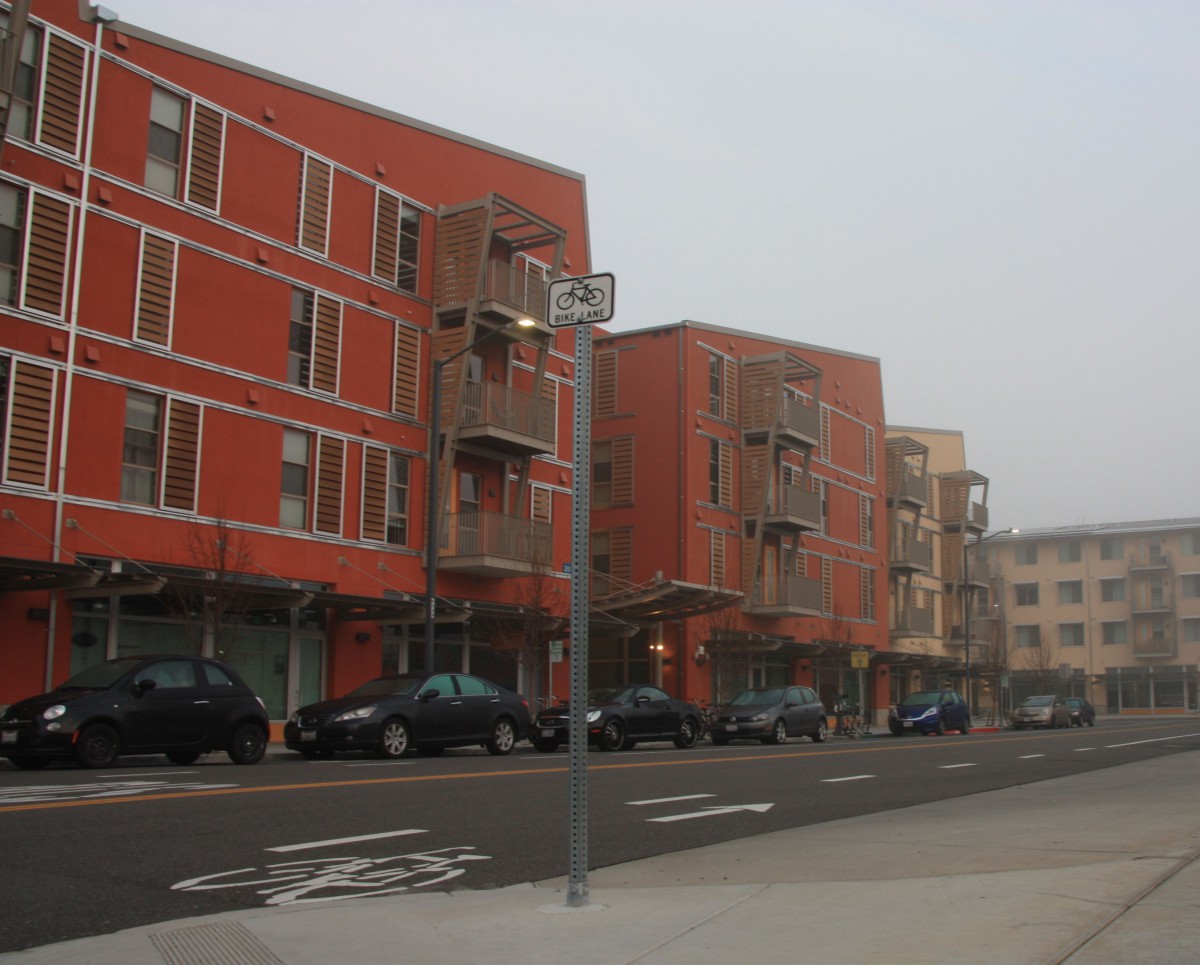
UC Davis announced this week that students continue to apply to UC Davis in record numbers as UC Davis continues to look to increase undergraduate enrollment.
Applications for first time students jumped by another 10 percent UC announced on Thursday, meaning that 77,727 students applied to be freshmen and, with transfer applicants, the number has soared to 95,207.
The increase dovetails with the statewide increase, where UC has seen 13 straight years of record-breaking highs for applications.
In 2013, UC Davis launched its 2020 Initiative which planned to add about 5000 new students by 2020. However, the growth of the university has clashed with land use policies for the city, and in the last few years we have seen a fierce debate over university growth, fueled by low vacancy rates in the Davis rental market.
These latest numbers figure to add more fuel to the fire and the pressure on UC Davis to add to its housing projections under its Long Range Development Plan (LRDP). In the spring of 2016, UC Davis agreed to add 6200 beds, which would amount to roughly 90 percent of the projected new enrollment by 2027.
However, the Davis City Council and other bodies do not believe that is sufficient and have pushed for the university to commit to 10,000 new beds, which would house half of the total student enrollment on campus by 2027. To date, the university has resisted formally increasing from the 90 percent/6200 bed figure – but that may change.
The Vanguard has received some indication that, in January, the university will announce that they have increased the number of new beds they will plan to build. That number could go to 10,000 or it could be some number between 6200 or 10,000. At this point, we have no idea.
In the meantime, the market has also responded with a number of new student housing proposals. The council approved Sterling Apartments back in May, the first market rate apartments approved in 
Davis in 15 years.
In addition there are proposals for new apartments at Lincoln40, Plaza 2555, and Nishi, which could push the additional number of beds to 5000, possibly higher. That number could offset the 3800 bed lag from the university – or if the university agrees to add to their student bed allotment, it could act as a supplement.
Over the summer, when the planning commission and city council held a joint meeting, they discussed the need to have a more healthy vacancy rate. Currently the rate is calculated to be 0.2 percent, which effectively means that at any one time there are only 24 vacant units in the city.
The city calculates that there are 11,953 total apartments and only 24 of them are vacant. The city’s goal is to increase the vacancy rate to a more healthy 5 percent.
There are also 4850 single family home rentals in the city and the city has a goal to “recover” single family home rentals by 5 to 10 percent, or 242 to 485 units.
The city could add 708 beds at Lincoln40, 530 at Plaza 2555, and 2600 at Nishi. Another potential project, but one which is yet undefined, is Oxford Circle which could add another 400 beds, potentially. That is in addition to 540 beds at Sterling that are already approved.
The city believes it needs about 816 to 1059 new apartments to meet existing needs – although calculating by the apartment rather than the bed is a bit tricky, and we estimate about 4000 beds as the minimum need in the city.
To get to a 5 percent vacancy rate, the city believes it needs about 574 addition apartments over and above existing needs. But that figure might not reflect the moving target with increasing enrollment.
However, to make matters more tricky, there has been public pushback over student housing. Two weeks ago in an op-ed, Eileen Samitz attacked the proposed projects, arguing they “are exclusionary by design because they are predominantly four- and five-bedroom apartment suites renting by the bed, with individual bathrooms.”
Building these, she argued, “[t]he vacancy rate will not improve, especially for non-students.” Part of her reasoning is that “UCD will continue to add thousands more students every year” and she argues that UC Davis will continue “to delay and minimize the number of on-campus student beds being added.”
Ms. Samitz argues: “If new multi-family development is going to be costly for the city, it needs to be housing in which everyone can live, including families and workers, not just students.” Then she adds, “Instead of mega-dorms, any new multi-family housing needs to have an inclusive design that suits all renters — individuals, families or students — as well as rental agreements that motivate conservation of water and energy.”
Sunday Commentary: Building More Student Housing Will Reduce Traffic Impacts in Davis
At the last council meeting, Ms. Samitz was joined by a number of other citizens, who argued against the so-called mega-dorm.
Colin Walsh noted, “There seems to be a shift in the projects that are coming before the city. These projects that are four, five, six students, residents, even more if they double up, are a new and different beast. Some of them have already been approved, more are coming.
“These are really single-use buildings and not easily repurposed in the future,” he said. “Not places that are welcoming to families, not welcoming to working people, not welcoming to single parents. The very people who are being squeezed out of the market by students who can afford quite a bit of rent by people when they break up the houses into quite a bit of people.”
Eileen Samitz noted that she wrote an op-ed on the mega-dorm issue, saying, “I wanted to alert the community that there are at least five to seven of these mega-dorms being processed by the city. These mega-dorm projects are exclusionary housing – they’re specifically designed for students, they’re enormous four- or five-bedroom apartment suites, each one has a bathroom, the bedroom has a lock so it’s an apartment within an apartment.
“None of this is appropriate for families that need rental housing within the city,” she said. “This rent-by-the-bed situation is not going to help students either, because it’s going to be very expensive – it’s going to be very luxury type student housing, so it’s not going to be affordable.”
She added, “The issue is the design of these units, the fact that what instead the city should be looking at is any of the multi-family housing coming forward with … every other multi-family project coming forward needs to be one-, two-, three-bedroom apartments so that everyone can live in it.”
The Vanguard continues to support expansion of housing at UC Davis, although we note that housing is not exactly inexpensive on campus either, with rents costing around $1050 per month. However, we believe that a combination of housing on campus and off campus can bring the vacancy rate up to the 5 percent goal which will allow for a much better rental market.
Those who argue that the current proposals are exclusionary by design miss the key point that the vast majority of housing demand is coming from students. Earlier we calculated the percentage of rentals housing as being about 85 percent student, but some have suggested that number is too high and should be closer to 60 to 65 percent.
Either way, the majority of housing is currently occupied by students and the new housing demand is almost exclusively student housing.
Building two- and three-bedroom apartments at market rate is probably simply going to end up being filled by students anyway – and rent by the bed and larger scale apartments end up being more efficient and cost-effective for the students and landlords.
The housing crisis ends up hurting all renters – by providing a glut of student housing near campus, as most of the proposed sites are, the potential is there to achieve the citywide goal of recovering 242 to 485 home rentals for other purposes. And that could free up single family homes for families.
—David M. Greenwald reporting
The Vanguard Needs to Raise $1300 to Meet Its Financial Obligations This Month







It doesn’t matter how many apply, a million could apply but all that matters is how many UCD accepts.
In one sense you are correct, but you’re missing the picture here as well – more demand means that UC Davis will have more ability to expand enrollment in the future.
As far back as I can remember UCD always has more applicants than spots so they’ve always had the ability to expand.
… and how many choose to accept the offer of enrollment from UC (a rate which differs between resident and non-resident applicants), and how many stay after the first quarters of attendance (some drop out). Enrollment is actually a bit of a moving target.
I hope this is correct, and I hope the number is 10,000 or more. I also hope that the University works to bring down rents for students. But I also think that if these rumours are correct, the door is open to have a greater diversity of types of housing built in Davis.
i’ll Be interested to see what ends up happening if UCD comes out with a new number in January. Other than Lincoln40, none of the other housing proposals have gone very far and Plaza 2555 has more diversity of housing types than some of the other proposals.
David,
I am not understanding your comment since Lincoln40 has no diversity of housing types and none of the mega-dorms proposals have enough affordable housing including Plaza 2555. Also, Plaza 2555 does not have great diversity. It is another mega-dorm not much different than Sterling.
which comment?
Also, Plaza 2555 has roughly the breakdown of rental housing that the rest of the city does.
This comment makes it sound like you are saying Lincoln40 has diversity. It does not. It s a mega-dorm with student-only housing.
And Plaza 2555 is not producing the amount of affordable housing it needs to. It is predominantly 4- and 5- bedroom apartment suites which are short-changing the City in affordable housing since they are being counted as only “one-unit” towards the affordable housing units (which are typically 1- and 2- bedroom apartments).
My commet said that other than Lincoln40, none of the projects have progressed far.
And then the second part is that Plaza 2555 has more diversity of type, about 60 percent student housing, with the rest being a mix of housing types which is about the breakdown (a little less) than the city as a whole for rental housing.
David,
Ok, then I would have to disagree that Lincoln40 has “progressed” since it is still 100% mega-dorm for students only and which will be expensive, and it is not offering nearly enough affordable housing.
And Plaza 2555 is not offering enough affordable housing either.
After all, hasn’t that been what the Vanguard articles been talking about all week? The need for more affordable housing? The mega-dorms are clearly not offering enough affordable housing.
Progressed as in, going to the planning commission.
The large student-oriented developments will draw tenants out of the existing apartments and single-family rentals, which will open those up for families and young professionals. The increased supply will then reduce pressure on rental prices. Rents will then become more affordable. We’ll never be able to build enough “A”ffordable housing units alone to meet the demand from lower income households (along with the fact that it is difficult for many of them to qualify)–rents can only be suppressed across the board by increased supply.
Agree, except for the word “will” might be more appropriately, “may” or “likely”… the latter two I suspect are most accurate, and lean to “likely”…
You’re parsing words here, Richard is essentially right.